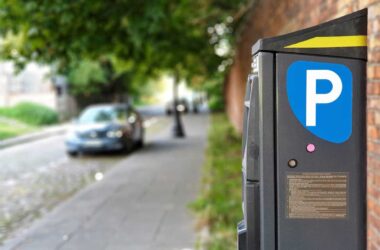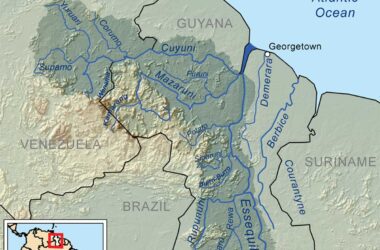“THE victorious strategist only seeks battle after the battle has been won” Sun Tzu, The Art of War
I quote from the Art of War to underscore that victory is assured by diligent planning and preparation.
Corona virus disease 2019 (COVID-19) is a new infectious disease that was first documented on 31st December 2019 in Wuhan City, China. A new Corona virus, SARS-CoV-2, was rapidly identified and its genetic sequence determined. This is a single stranded RNA virus with 82% nucleotide similarity with the original SARS virus, SARS-CoV. SARS stands for Severe Acute Respiratory Syndrome. We are officially in a WHO declared pandemic with, as of 12th March 2020, 125,048 confirmed cases and 4,613 deaths. It is noteworthy that there are recent cases in Martinique, St. Vincent and Trinidad and Tobago.
COVID-19 presents with a range of symptoms. Some people infected with SARS-CoV-2 may have:
No symptoms
Mild disease in 80% of known infected people
Severe disease in 15% of infected people
Critical disease in 5% of infected people.
The percentage of people who die is 1-3%. However elderly people have higher death rates:
4% in 60-69 age group,
8% in 70-79 age group
15% in over 80’s.
Also people with lung disease and chronic noncommunicable diseases are more likely to have severe disease and die.
The main symptoms are fever, dry cough, sore throat, nasal congestion, headache, muscle pain and malaise. When the disease is more severe, shortness of breath and increased respiratory rate is noticed. The shortness of breath can be moderate or severe and can progress to ARDS (acute respiratory distress) and respiratory failure. Some patients develop sepsis from secondary bacterial infection, and some develop multiple organ dysfunction/failure (MOD/MOF). The disease is suspected when a patient presents with an acute respiratory illness with any of the above symptoms and has been exposed to people with COVID-19 or been in countries where there is COVID-19 or has the above symptoms with no other explanation.
The disease is confirmed by laboratory tests that identify the virus; the gold standard test is multiplex real time RT-PCR (reverse transcription polymerase chain reaction). There are other viral antigen rapid identification tests currently coming onto the market, the reliability will have to be determined. These tests are usually done on swab samples from the nose and mouth.
COVID-19 is primarily a droplet spread disease. That is when infected people cough droplets are ejected from the nose and mouth. These droplets travel for approximately 3 feet and then drop down. The droplets contain copious virus and if these droplets are inhaled, land on mouth, or eyes then the person can become infected. Also if the droplets land on a surface or if an infected person with virus on their hands touches a surface then that surface becomes infectious and if someone touches these surfaces their hands can pick up the virus. If the person then touches their mouth, nose or eyes they can become infected. Hence personal prevention measures include:
Respiratory hygiene – infected people should wear surgical masks to prevent droplets being projected. Infected people without masks should cough into the crook of their elbow or into tissue while bending their heads down. Tissue should be disposed of immediately into a bin without contaminating the top or outer surface of the bin.
Hand hygiene – virus on the hands is eliminated by hand washing with soap and water, hand washing must include the entire surface of both hands, wrists, above wrists, nails and in between the fingers. The washing should be for at least 20 seconds, for me that is how long it takes to sing Twinkle, twinkle little star once or Happy Birthday twice. Hand sanitizers with 70% alcohol can be used; you can also make these hand sanitizers if they are not available commercially.
Surfaces can be disinfected with 0.1% bleach solution or 70% alcohol or 0.5% hydrogen peroxide. 0.1% bleach is made according to the concentration of the bleach you have bought (a 1% solution is made into 0.1% by adding 1 cup of bleach to 9 cups of water, a 5% bleach solution is made into 0.1% by adding 1 cup to 49 cups of water). Some bleach bottles will advise on how to dilute for surfaces on their label. Bleach solutions should be made and used fresh. When assessing the alcohol content of alcoholic drinks remember the alcohol percentage is half of the stated “proof”. In other words 80 proof is 40% alcohol and 151 proof is 75% alcohol.
The virus can also be spread by aerosols in two main situations:
To health care workers manipulating the airway of infected patients
Prolonged close proximity to an infected person in closed spaces.
The incubation period (that is the time from infection to first symptoms) of SARS-CoV-2 is 1-14 days the average is 5-6 days. The reproduction number (R0) of this virus is 2.2, that means an average of 2.2 people become infected for every infected person. The increase by a factor of 2.2 every 6 days indicates that if the disease is allowed to progress without intervention, every 6 days the number of infected people will double. I fully accept that the math is not as simple as I am using here, however starting at day 1 with 1 infected person by day 78 there will be 28,047 infected people and at 84 days there will be 61,703 infected people. This model projects for us to understand how quickly our health services could be overwhelmed. Assuming 20,000 infected people with the information that at least 10% will have to be hospitalized, this means hospitalizing 2,000 people over a period of about 2 months, that is 1000 people per month. Currently nationally, we admit 1,200 patients to hospital every month and we are operating at almost full capacity. More disturbing is 5% of people will be critically ill, that is 1,000 people or 500 people per month or 16 per day in ICU. Assuming half in ICU will need ventilation; that is 8 people per day needing to be put on a ventilator. Assuming the average time on the ventilator is 7 days, this means we would need the ridiculous number of 112 ventilators, we currently have 9 ventilators and 12 on order. To add to this, we would have 18,000 people in ambulant isolation either self-isolation or state isolation. At this level we would effectively have to implement mass isolation and quarantine – that is like Italy or Hubei province – national lock down.
From the above it is clear we need to alter the course of the disease and prevent the virus from affecting 20,000 people. The manageable target is to restrict our peak COVID-19 infected population to 5,000 which is about 3% of our population. To achieve this, we have to implement public health measures aggressively. In order to target public health strategies, we need to understand that there are four populations:
Severely and critically ill who need hospitalization – estimated at 10% of infected
Ambulant ill – 90% of known infected
Exposed people who are well
Non-exposed people who are well
Two key public health strategies are quarantine and isolation.
Quarantine is the sequestering of well people who have been exposed to the disease without adequate protection and keeping these people away from others for 14 days.
The other one is isolation, which is the sequestering of sick people. The ambulant sick are kept in self isolation or state isolation away from others. The severely and critically ill are isolated in hospital.
The public health measures include:
Containment – we need to prevent infected people from entering Saint Lucia. To achieve this, we need airtight border control with aggressive referral to quarantine for 14 days with monitoring of the quarantined. Quarantine can be self-quarantine or state quarantine. The best action now is close the borders.
The other component of containment is contact tracing of COVID-19 patient contacts. All contacts should be quarantined as above. Similarly, the sick who enter the country or people who get sick are self-isolated; if appropriate and safe, or alternatively state isolation in an ambulant facility. The more aggressive we are at case-finding and screening people the better we can contain COVID-19. We must all be more responsible and if we have a cough, we should self-isolate ourselves at home. If we know that we have been in contact with someone with COVID-19 we should self-quarantine for 14 days. Use of masks by sick people and frequent hand washing by sick people is part of containment.
Mitigation – this includes all strategies to prevent people from being exposed. Social distancing is the key principle. Stay more than 3 feet away from people. Reduce public exposure and stop all mass gatherings and events. Do more online transactions rather than personal transactions. People who can work from home should start. Keep hands and surfaces clean from droplets from infected people. Reduce hand and body touching.
In order to implement these strategies effectively we need to establish the national command center, led by a competent incident commander with a strong advisory team and competent secretariat. The command center should establish robust communication and information systems. A 24 hr. 7-day toll free hotline with wide band width and enough technical people to respond to questions from the public. The command center team produces all procedures and protocols, disseminates and ensures implementation. It also ensures ongoing communication with the general public. The incident commander has the authority and access to the resources to make all necessary decisions. The incident commander reports to the national emergency management advisory committee which is chaired by the Prime Minister. To achieve this a state of emergency should be established, and the necessary resources allocated to the Incident Commander and team. Every hospital, health institution and community health region should establish command teams chaired by their incident commander who report to the national incident commander. Modern technology with communication systems, big data processes – using population and patient databases, GPS mapping should all be applied as best we can. We must identify the places for quarantine, and isolation and we must be able to escalate this as necessary. Outreach teams, community teams with contact tracers, rapid response teams, emergency service personnel, police are all deployed and in communication with each other and the command center.
If we are interested in applying a good model of the above, we should engage with Taiwanese expertise as Taiwan has implemented a system that has worked well; to date they have 49 cases and 1 death. The other good models are Singapore and Hong Kong
In conclusion there is no doubt that we are in a war with this virus, our preparation, planning and approach to this disease will determine how many casualties we will have and whether we will be overwhelmed or not. We need every person, business and institution engaged with clear understanding of respective roles. This is a testing time for us we need to have the courage to do what is necessary to defeat this disease. Last words – don’t panic but take action. Let us remember that we hold our beloved St. Lucia in trust for our children and our childrens’ children.





